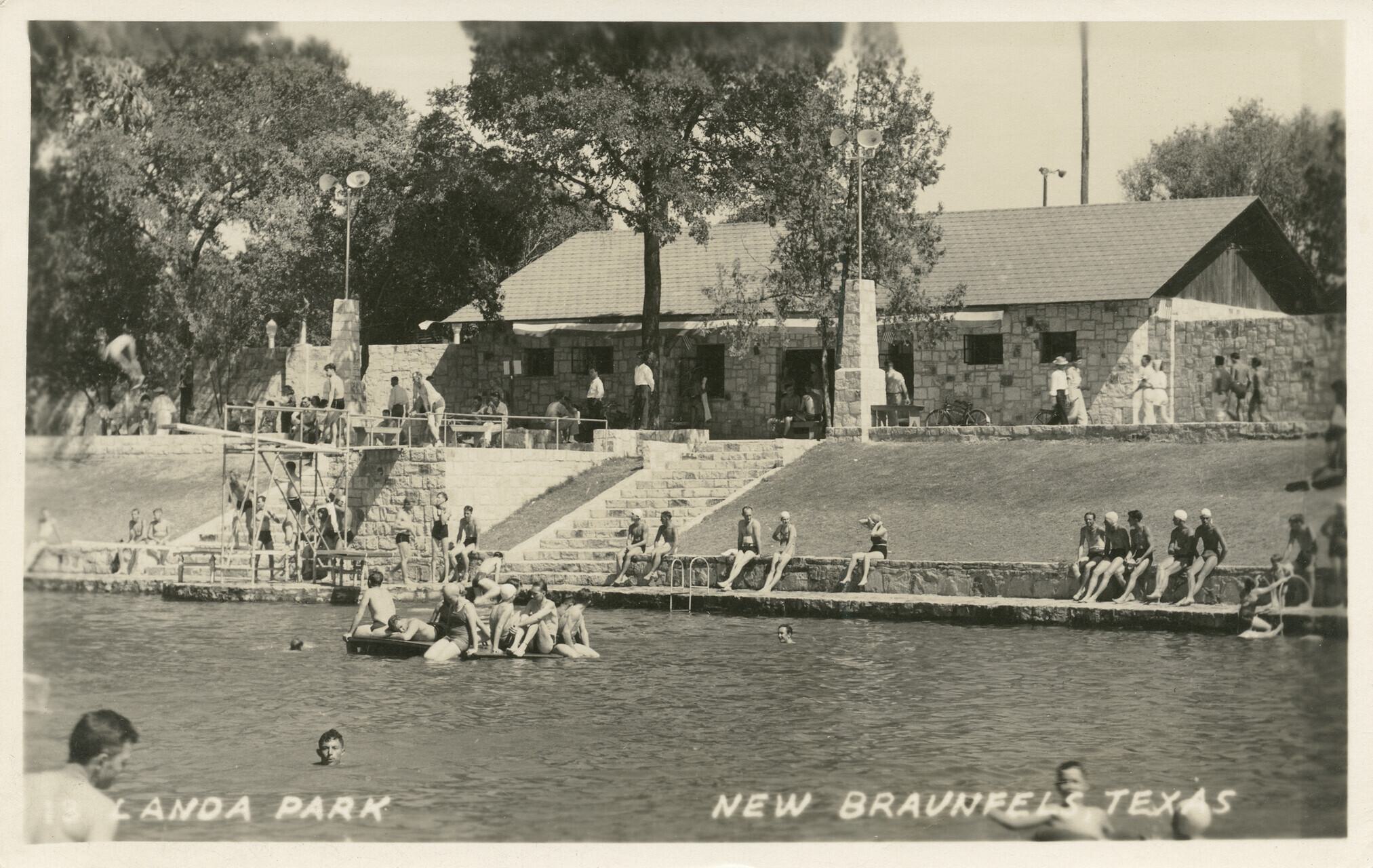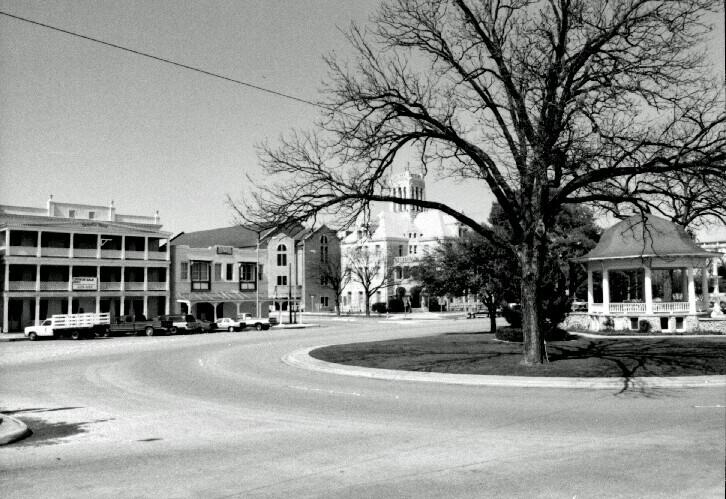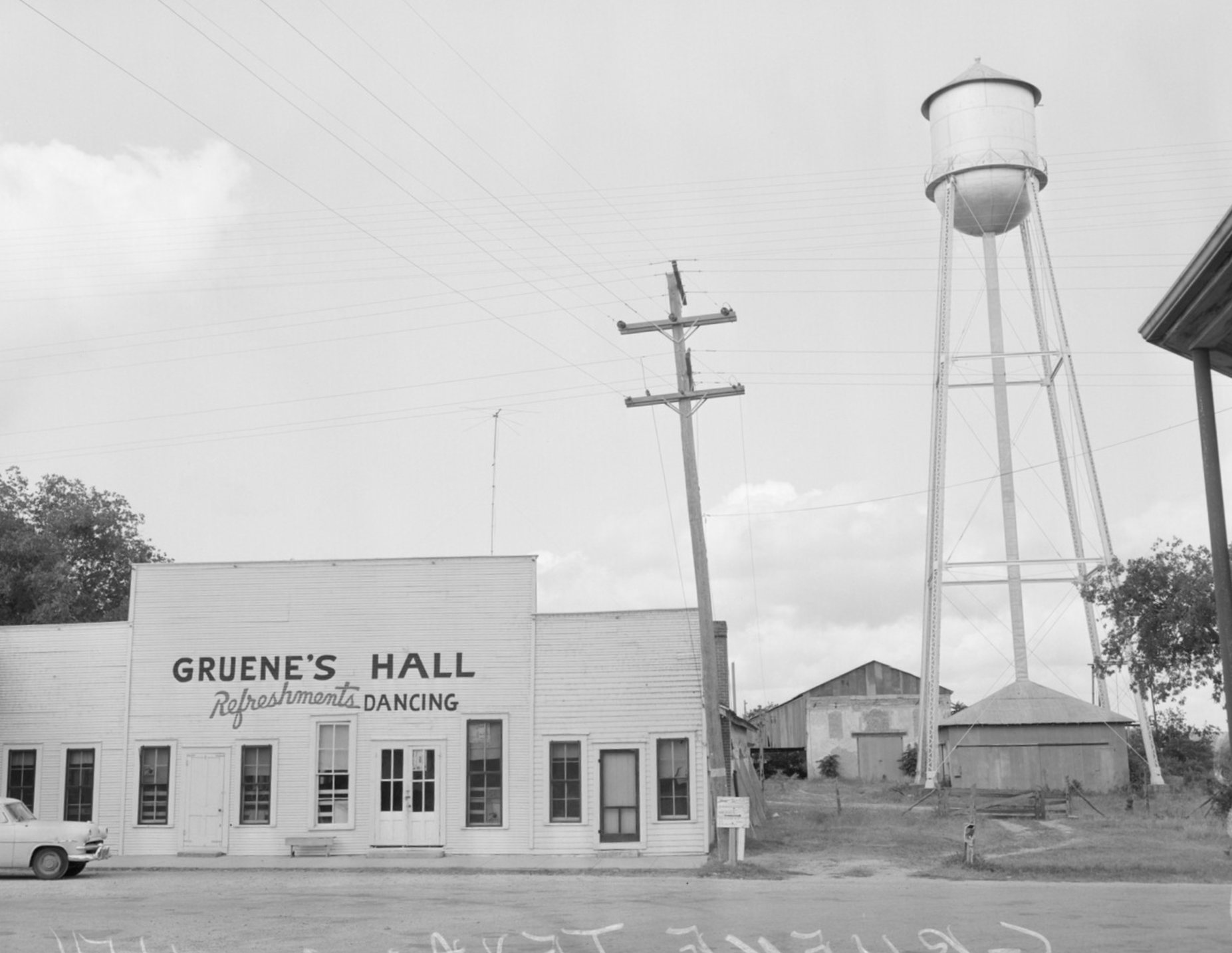10 fun facts about the city’s history
One of the best parts of New Braunfels is its colorful history. The city got its start when a German prince had visions of creating a “New Germany” in central Texas. Prince Carl of Solms-Braunfels, Germany purchased 1,300 acres of land here along the Comal and Guadalupe Rivers on March 21, 1845, a day now recognized as Founder’s Day.
A lot has happened since then, but the past is always present in New Braunfels. The city honors its German heritage year-round with festivals, well-preserved historic sites, public art, museums, food and beer.
This Founder’s Day, get to know New Braunfels history a little better with these 10 fun facts.
We’re home to the shortest navigable river in the U.S.
When you plunge into the cool waters of the Comal River, you're floating in water from the largest concentration of naturally occurring freshwater springs in Texas. You’re also splashing in the most significant spring system in the Southwest U.S., one that humans have gathered at for least 10,000 years.
As the shortest navigable river in the U.S., the Comal is often called the “longest shortest river in the world.” The river originates from headwater springs in Landa Park, then flows about 2.5 miles before merging with the Guadalupe River. In contrast, the Guadalupe is approximately 250 miles long, from its origins in Kerr County to the Texas Gulf Coast.

The city’s first public school was under a grove of trees
German native and Texas transplant Hermann Seele established the city’s first public school and became the first teacher in New Braunfels on Aug. 11, 1845, when he held class for 15 children beneath a grove of elm trees near what today is the Sophienburg Museum & Archives.
Seele taught the children reading, writing and arithmetic in both German and English. A farmer and lawyer, Seele left extensive written accounts of pioneer life in New Braunfels. That first year, school was suspended when temperatures dipped down to 7 degrees and heavy rain continued for multiple weeks. The school moved into the German Protestant Church in March 1846.
“They were really into education. It was a priority,” said Keva Boardman, an archivist with the Sophienburg Museum. “A lot of the German immigrants were college boys, they had gone to university, so it was a well-educated bunch.”
Seele went on to serve the community in a variety of roles, including helping to establish the Zeitung newspaper, serving as district clerk for Comal County, state legislator, justice of the peace, mayor, city alderman, and postmaster.
Main Plaza: an oasis in the heart of downtown
Drive through downtown New Braunfels and you’re sure to circle Main Plaza, right in the heart of the city. It’s been there since the city was first mapped out in 1845. The plaza is a greenspace featuring a bandstand and fountain, located within a European-style traffic circle. For 180 years the plaza has hosted festivals, musical performances, markets and other gatherings, and is still used for special events. Historical tip: The covered structure is not called a gazebo; locals refer to it as a bandstand, built to stage musical and singing programs.

Think pink at the Comal County Courthouse
The grand Comal County Courthouse, which was completed in 1898, is unusual in a few ways.
For one thing, unlike most courthouses in Texas, the courthouse is not at the city’s center. German settlers here opted for a town plan that kept a platz, or plaza, at the heart of the city to provide an aesthetically pleasing community gathering space.
If you’re expecting standard institutional beige interiors inside this three-story Romanesque Revival structure, you might be shocked when you see the second-floor courtroom. It’s pink with an elegant, patterned wallpaper border. This is true to the original interior design of the courthouse, which reflected the fresh, vibrant Colonial Revival style that was in fashion during the late 1800s. The courthouse, which is listed on the National Register of Historic Places, was revitalized in 2013 with an $8.6 million restoration.
Sausage: the national food of New Braunfels
You can get great food of all kinds in New Braunfels, from BBQ to Tex-Mex to seafood and more. But if the city had an official food, it would have to be sausage. It’s not only delicious, but life-saving. As a reliable way of preserving meat in the days before refrigeration, sausage helped many German settlers survive on the harsh Texas frontier. Using old-world sausage making skills, each family had their own recipe to preserve venison, beef and pork. New Braunfels celebrates this delicacy every November during Wurstfest, a 10-day festival honoring the city’s German heritage with polka music, dancing, carnival rides, beer and of course, plenty of sausage.
In New Braunfels, beer is history in a glass
Thanks to its location along the banks of the spring-fed Comal River, German immigrants had a wonderful source of water to brew their beloved beer. Even during Prohibition, when alcohol sales were illegal, the city had a thriving network of bootleggers willing to sell their home-brewed beer on the sly.
The city’s beer-making traditions live on today at local breweries including the Faust Brewing Company, New Braunfels Brewing Co., the Guadalupe Brewing Co. and 5 Stones Artisan Brewery. At Krause’s Biergarten and Café, established in 1959, an enormous tap wall dispenses more than 80 beers from Germany, Texas and many places in between.
The city’s original meat market
In the 1800s, raising cattle was vitally important to survival on the Texas frontier. A combination stockyard, slaughterhouse and butcher shop was established in an open space near downtown, a block away from both the Comal River and Main Plaza.
It started as a way to give German settlers convenient access to meat then turned into a commercial enterprise that lasted more than 60 years, until citizens of the growing city had had enough of the unappealing aspects of having a meat market close to downtown, especially in the hot summer months.
After meat production moved elsewhere, the Marktplatz space served a variety of purposes, from crop storage to entertainment such as traveling carnivals and live performances. Today this historic site is a city park with picnic tables, a pergola and water fountain.
The historic bridge that revolutionized travel in Texas
When the Faust Street Bridge was built in 1887, it was a marvel of engineering. The wrought-iron bridge spanned a major waterway and unlike other bridges in the area, was built to survive flooding.
“The first bridges in New Braunfels went from bank to bank, so they would get washed away,” Boardman said.
Prior to the bridge’s construction, travelers had relied on ferries to cross the Guadalupe River. This system worked well unless there was flooding, which could prevent crossings for weeks. Since the 1700s, the main ferry crossing was along a route known as El Camino Real, the King’s Highway, a trail used for carrying supplies to Spanish missions in East Texas. The bridge is one of the last remaining structures along the original trail. The river crossing was also along a well-established route for bringing supplies and settlers to the area from the Texas Coast.
The bridge was also unique in that it was free for travelers to use. Most bridges built during the 1800s were constructed by private companies that charged tolls to cover construction and maintenance costs. Comal County leaders considered the bridge to be an investment in its thriving community. Today, the Faust Street Bridge is a pedestrian bridge, providing a scenic location for photo opps, river views and strolling.
Gruene: a community rescued from history
Ernst Gruene arrived in Texas in 1845 with his wife and two sons and eventually purchased land north of town along the Guadalupe River. With his sons, he built a cotton farming community that thrived for decades. Weakened by a severe drought that lasted several years, the cotton industry was finally wiped out by a boll weevil infestation in Texas in the 1920s.
Another development sealed the community’s fate. Gruene was located along the road between San Antonio and Austin, but that ended in the 1930s when the road moved to what is now Interstate 35. Decreased land values and a lack of farming jobs turned Gruene into a ghost town.
Gruene faded into obscurity until 1974 when architecture student Chip Kaufman stumbled upon the ruins of the once-thriving community while kayaking the Guadalupe River. He learned that the buildings were about to be demolished to make way for a housing development.
Kaufman teamed up with Pat Molak and Mary Jane Nalley to rebuild Gruene, restore its historic structures (including Gruene Hall and the famous water tower) and transform it into a beloved historic district and visitor destination. Today, many of the original structures are lovingly restored and serve as lodging, shopping venues and restaurants.

Welcome to…Comaltown?
If history had played out differently, you might spend your vacation in Comalstadt (Comaltown). Nestled in the fork of the Comal and Guadalupe Rivers, Comaltown was separated from New Braunfels by the Comal River, connected at the shallowest part of the river by a bridge made of two pecan trees.
“It was its own little village at the time,” Boardman said.
Comaltown became part of New Braunfels in 1847, but a few years later, 45 citizens signed an unsuccessful petition to separate Comaltown from New Braunfels. Despite being incorporated into New Braunfels, Comaltown kept its name and identity as a distinct part of town for more than 100 years.
Explore 180 years of history #VisitNBTX
Dive into a destination with a fascinating past #VisitNBTX! Find museums, historic attractions, activities, lodging, restaurants, shopping and more for your next visit at visitnbtx.com.